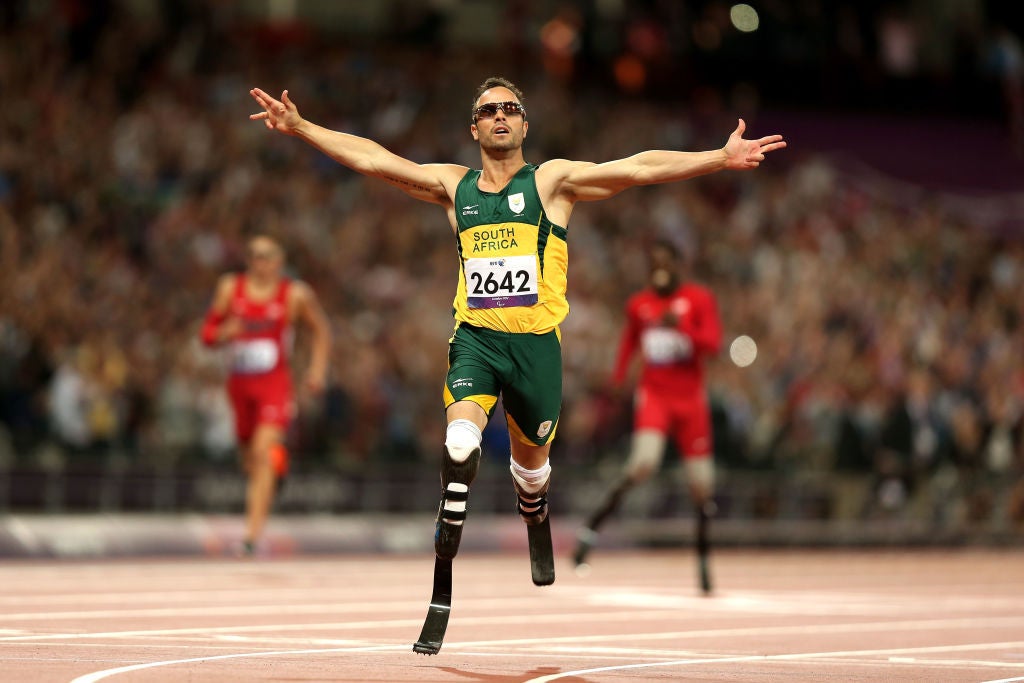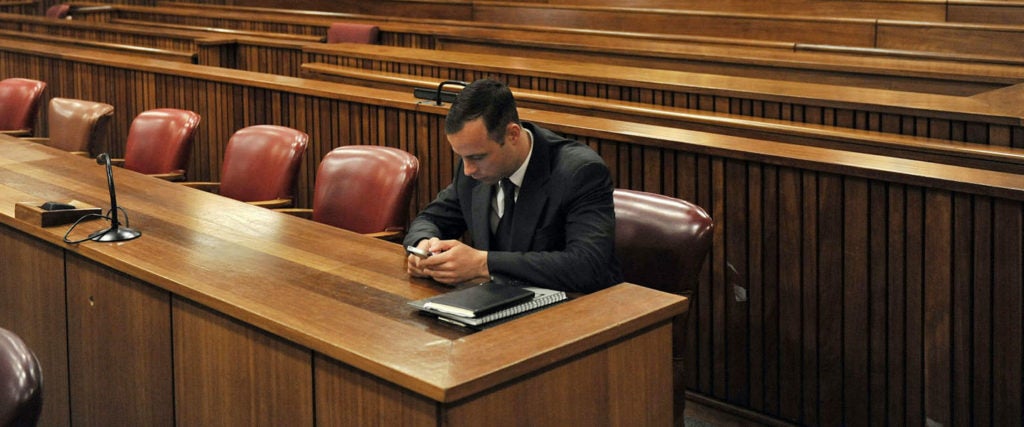Whenever news would break about some high-powered celebrity being a monster — Bill Cosby, Louis C.K., Michael Jackson — I would occasionally hear people react by saying sadly, “Oh, what a shame.” This reaction pisses off some because it might sound like it’s expressing sympathy or sorrow for the abuser, as opposed to focusing on the survivors. I understand and agree with that sentiment — the survivors are the ones who matter — but I also kinda get what the “Oh, what a shame” contingent are trying to say. Most of us are mere mortals — we’re not blessed with incredible talent or the ability to enrapture millions with our gifts — and so we admire those who can. For talented men like Cosby or Jackson, who had provided a lifetime of entertainment, to use their gifts and clout to destroy others (and then be shielded from their crimes because of the public’s fondness for them) is disgusting. But it’s also such a horrible shame. They had abilities the rest of us would do anything to possess — and look how they chose to use them. It’s an unfathomable waste.
ESPN’s 30 for 30 series has chronicled lots of talented bad men, culminating with 2016’s phenomenal O.J.: Made in America, and their latest, The Life and Trials of Oscar Pistorius, spans five-and-a-half hours over four installments to chronicle the champion South African sprinter. (The entire docuseries streams on ESPN+ starting September 27th.) Director Daniel Gordon is very clear that Pistorius, who’s currently in prison for the shooting death of his model girlfriend Reeva Steenkamp, is to blame for his horrendous crime. But Life and Trials also allows room for viewers to appreciate what a colossal waste of a promising life Pistorius’ downfall represents. Without ever letting us forget Steenkamp or her grieving family, the documentary becomes a meditation on why we need heroes — and what happens when they let us down.
Before 2013, Pistorius’ story was one of triumph. Born to a rich white family in South Africa, a nation still pulling out of the decades-long ignominy of apartheid, he had both legs removed from below the knee when he was only 11 months old. But as family members explain in Life and Trials, Pistorius never seemed undone by this obstacle, enjoying a happy life with his siblings. (Not that there weren’t hardships: His parents divorced when he was a boy, and his beloved mom died in his teendom. Meanwhile, his biological father was more irritant than support system.)
After deciding that maybe rugby would be a bit too rough for him, Pistorius turned to track and field where, with the thanks of sophisticated prosthetic legs known as blades, he quickly became a superstar runner. First capturing the world’s attention at the Paralympics, Pistorius pushed to be included in the Summer Olympics, where he could compete with the able-bodied. When he eventually participated in the 2012 London Games, he was the first double-amputee runner in Olympic history, becoming a celebrity and a feel-good story — heartening proof of the resilience of the human spirit.
Similar to April’s The Last Dance, Gordon structures his documentary across two timelines: the “present-day” narrative and a series of chronological flashbacks that show how we got here. In Life and Trials, each chapter is built around the 2013 shooting of Steenkamp and subsequent trial, while the flashbacks fill us in on Pistorius’ upbringing and burgeoning athletic glory. In addition, Gordon introduces a Rosebud element to the proceedings — a possible clue from Pistorius’ childhood that might explain where it all went wrong. (Life and Trials argues that he unsuccessfully sought out romantic partners who could fill the void left by his mom.)
As such, the documentary recalls both The Last Dance (complicated narrative structure) and O.J.: Made in America (a true-crime tale mixed with a character study), which means that a certain structural conventionality does start to creep in. Plus, Life and Trials may bring to mind this summer’s Lance, in which director Marina Zenovich examined Lance Armstrong, another inspirational athlete laid low. In different ways, the subjects of all these films are talented bad men. But what distinguishes Life and Trials is its sad, frustrated acknowledgement that Pistorius’ fall is largely inexplicable. Neither a dead mom nor the pressure of being a world-famous athlete adequately explains what led Pistorius to murder. (And to be clear, O.J. Simpson’s chronic insecurity and anger issues in no way justify his killing of Nicole Brown Simpson and Ron Goldman. But in hindsight, we can see that there were warning signs of what he was capable of doing.) Life and Trials is the story of a man whose worst moment doesn’t entirely square with the person he was.
When Steenkamp was shot dead on Valentine’s Day 2013 in Pistorius’ Pretoria home, the sprinter claimed that he thought an intruder had broken into the house in the middle of the night. In his confusion and panic, he fired four times into the bathroom, thinking it was the burglar, not his girlfriend. And, initially, his fans and South Africans in general believed him: It was a terrible accident, and whose heart wouldn’t break for this nice young man and his tragic mistake?
Gordon has compiled an impressive array of interview subjects, including journalists, several members of Pistorius’ family, his business associates and a former girlfriend, as well as members of Steenkamp’s family and a close friend of the couple. It’s not surprising that those in Pistorius’ camp, to this day, believe he’s innocent — that he did, indeed, just make a mistake — but what’s interesting is that “Oh, what a shame” look on their face. He didn’t seem like a violent guy, and it didn’t seem like he and Steenkamp were having troubles. How could he do such a thing on purpose? Especially after all he’d gone through?

Life and Trials effectively makes the case for why he was once such a hero. Barely into his 20s, Pistorius was a prominent athlete on the international stage, known as the “Blade Runner” because of his prosthetics, sporting a self-effacing personality and a boyish charm. Gordon illustrates how Pistorius represented a tension within South Africa between its white elite and its formerly oppressed Black citizens — but also how his athletic success was a symbolic healing for the nation, which had previously been banned from events like the Olympics because of its system of apartheid. Not only representing his country’s hopeful new age of racial reconciliation, Pistorius was the posterboy for paralympians, proving that disabled athletes were as compelling as their able-bodied peers. His was the kind of story you wanted to root for.
Perhaps because the documentary follows a familiar narrative arc — especially if you know how Pistorius’ trial ended up — some of Life and Trials’ most interesting aspects end up being separate from his rise and fall. Gordon explores South Africa’s troubling history of violent crime, as well as its legacy of violence against women — all of which played into how some locals reacted to Steenkamp’s murder. (To their minds, it was just another awful example of how women become forgotten victims in that society.) The documentary also spends a fair amount of time recounting the controversy surrounding Pistorius’ prosthetics — the IAAF were reluctant to let him compete in the Summer Olympics because they wondered if his blades gave him an unfair advantage — and we see the fascinating scientific study that went into determining precisely how his artificial legs differed from an able-bodied runners’.
As Life and Trials begins, it might be tempting to assume what its core themes will be — the scourge of domestic violence, the power that the famous have to use their celebrity to escape their crimes — and while that’s certainly part of this docuseries, Gordon doesn’t ever seem to settle on a definitive opinion on Oscar Pistorius. (And when he tries to sum up the fraught months that led up to Steenkamp’s killing — which included a longtime on-again/off-again girlfriend finally ending things with Pistorius, provoking him to start dating Steenkamp — it’s at best inconclusive in terms of revealing the sprinter’s mindset before pulling the trigger.) Those are limitations of this documentary, but it also creates a space to consider that people are too complicated for a film to explain — and, likewise, that those explanations won’t ever mitigate the terrible things they’ve done.

The documentary’s final chapter focuses on Pistorius’ 2014 murder trial as he faced a tough cross-examination from prosecutors. Cameras were allowed in the courtroom, but witnesses on the stand couldn’t be filmed, and so we only hear Pistorius crying and evading as his version of events is slowly dismantled. It creates this striking dynamic — a very famous person isn’t seen, reduced to just a quivering voice. Whereas Simpson’s guilt was fairly obvious, Pistorius’ shooting has far more ambiguity to it. (As even the prosecutors admitted, their case was based on circumstantial evidence — they didn’t have much solid proof that the shooting was premeditated.) Consequently, I imagine viewers will have complicated feelings about Life and Trials. Even if you believe that he hadn’t intended to kill Steenkamp — that he really thought he was firing at a prowler — the carelessness of his actions and his intention to do harm are undeniable. Either he’s a monster or a fool — neither description fits the man we’ve come to know over the documentary’s epic length.
When a South African appeals court took up Pistorius’ case after the initial ruling, one of the judges made this comment while announcing their verdict: “This case involves a human tragedy of Shakespearean proportions — a young man overcomes huge physical disabilities to reach Olympic heights as an athlete; in doing so he becomes an international celebrity; he meets a young woman of great natural beauty and a successful model; romance blossoms; and then, ironically on Valentine’s Day, all is destroyed when he takes her life.”
The shapeless, unimaginable shame of that tragedy courses through The Life and Trials of Oscar Pistorius. The fact that we may never know for sure exactly what happened that night only emphasizes how his fall from grace runs counter to our presumed narrative of bad talented men. Their hubris is supposed to be their undoing, their Achilles’ heel integral to their destruction. With Oscar Pistorius, we’re still not sure if it was stupidity or something much darker. That mystery leaves us unsure how to judge his legacy.
Of course, those who mourn for Reeva Steenkamp may find the distinction insultingly irrelevant.

